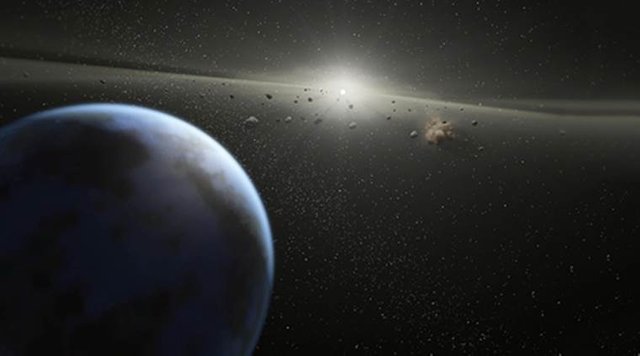‘Potentially hazardous’ asteroid, larger than the Burj Khalifa, to narrowly miss Earth’s surface

An asteroid larger than the Burj Khalifa will narrowly miss the Earth on February 4. The asteroid, 2002 AJ149, is on a trajectory towards our planet, though it is expected to miss the surface by 4.18 million kms (2.6 million miles).
While the asteroid has a length of 1.1km (0.7 mile), which is larger than the Dubai-based Burj Khalifa, that is 0.8km (0.5 mile) tall, it is expected to fly by the Earth at a speed of 67,000mph (107,826 kmph).
Asteroids are celestial objects that are smaller than planets, which are irregularly shaped and lack fixed orbits. In our solar system, most asteroids originate from the asteroid belt, a zone between Mars and Jupiter, where these objects are scattered about.
NASA classifies objects, which come within 4.6 million miles, as ‘potentially hazardous’, and gives them the ‘near-Earth object’ label. For the sake of reference, the distance between the Earth and the Moon is 384,400 kms (238,855 miles).
If a rock of this size were to hit the Earth, it could be expected to create a mini-ice age as per previous research, or plunge the planet in clouds of dust. A study published in 2016 has estimated that if Earth were hit by an asteroid of length 1km, it could make the average global temperature fall by as much as 8 degrees Celsius. Even if the collision were to generate dust and soot, they would not settle for at least 6 years, as per the study’s ‘worst case scenario’.
Many asteroids have flown by the Earth, but most of them have not been close to brushing the Earth’s surface. The year 1913 saw the Earth’s last collision with celestial objects, as a meteor exploded over Chelyabinsk in Russia. The energy released by the explosion was equivalent to that generated from 500,000 tonnes of TNT. The explosion lead to at least 1000 people being injured, as well as immediate deforestation in the surrounding areas.
Meanwhile, NASA has been in plans to create a spacecraft of the size of a refrigerator, that would be able to prevent asteroids from hitting the Earth’s surface. In 2024, it will be subject to a Double Asteroid Redirection Test (DART), which will make use of kinetic energy to force a change in the direction of the asteroid.
Why dont it just hit it man
if it hits a earth,it will eventually hit a man :)
you never know what surprises space is going to give it to us, one surprising blow and earth is as dead as mars.
its a cycle,it has happened in past and past will repeat itself again